
One of the most common issues I work with clients on is dog reactivity and aggression. I’ve discussed reactivity and aggression in this blog many times before but today I’m going to tackle the other side of the leash.
It’s a rarely discussed topic but the human side of the leash suffers immensely when living with a reactive or aggressive dog and it’s important to understand that this happens and to share strategies that help owners take care of themselves too.
Every single time there’s a reactive event or worse a physical altercation that involves your dog you feel awful. People’s reactions at the time can vary immensely but it boils down to feeling like you’ve let your dog down and put someone else in danger. It can be embarrassing, frustrating and more often than not scary.
When you’ve experienced even one of these situations it can change how you view your dog, the world around you and your feeling of safety. Humans react to situations differently and I’ve seen the gambit of frustration, anger, sadness, fear and denial. And in the end the human is suffering too. Often times owners will stop doing activities that they love – they avoid walks, hiking, camping and spending time around other humans and dogs as a result of their dog’s issue. This can cause depression and anxiety.
So here’s my advice:
Practice Self Care
Find time for yourself. If you feel anxious or depressed please seek professional help. Allow yourself breaks from dealing with the dog issues as you can’t do it all day everyday. Spend time doing things you love even if you have to confine your dog or leave your dog at home. Do not stop living your life because of your pet’s behaviour issues.
Understand that it’s normal to feel a wide array of emotions
We love our dogs even when they are aggressive or reactive. It’s a conflicting thing to experience. It’s ok to feel angry, upset, frustrated, nervous or anxious. And yes you can still love your dog even if they are dangerous. Suppressing your feelings about it won’t help in the long run. Be honest with your trainer about how you feel so they can help support you.
Create a plan on what you will and will not live with
This is important because once you go down the rabbit hole of trying to help your dog sometimes they get worse. And sometimes they get worse and it’s not your fault or your trainer’s fault. You need to have a clear idea on what you can live with safely and happily. If your dog is posing a daily threat to your children that’s not going to work out for ANYONE. If your dog’s quality of life is poor because of the lack of opportunity to participate in exercise and time with the family then that’s not going to work out for ANYONE. Sit down as a family and discuss what you can and can’t do for your dog. If you are living outside what you can handle then it’s time to discuss re-homing or euthanasia with your trainer and vet.
Find a support system
Connect with family and friends who can listen and support you through your journey. No one should be working through serious reactivity and aggression issues alone. You need more than your trainer to talk to. If you are having trouble finding a support system ask your trainer if they have other clients who may want to chat and vent on occasion. Until you’ve lived with reactivity or aggression it’s hard to understand so it’s important to have people to support you.
You may have trauma
Sometimes even once an issue is resolved an owner will feel nervous and anxious for years to come. And if you weren’t able to keep your dog then you may suffer with immense amounts of guilt. There is support available to you. I typically will advise clients in this situation to seek out counselling and support services from a trained professional rather than trying to suppress how they feel. You are not alone and this has happened to many humans. We love our dogs and sometimes that can lead to some very real pain.











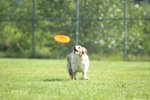
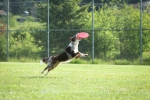

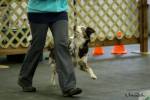

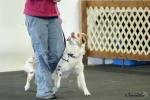
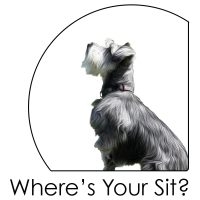
I think it’s important issue and it’s nice you’ve mentioned the human part of the leash. I myself have a reactive dog and as I’m also a dog trainer (a beginner more or less) I often feel really bad about myself. It would be lovely to have a perfect dog who’ll help me working on other dogs issues but we are what we are.
My part of our training is learn to accept it. The results like in a regular training – it’s getting better but sometimes we got a worse day 😉
From my experience what we feel influences dogs behaviour even more than we suspect. When I’m down in the dumps Hugo sees right through me and “takes control” and tends to be more reactive.
LikeLike